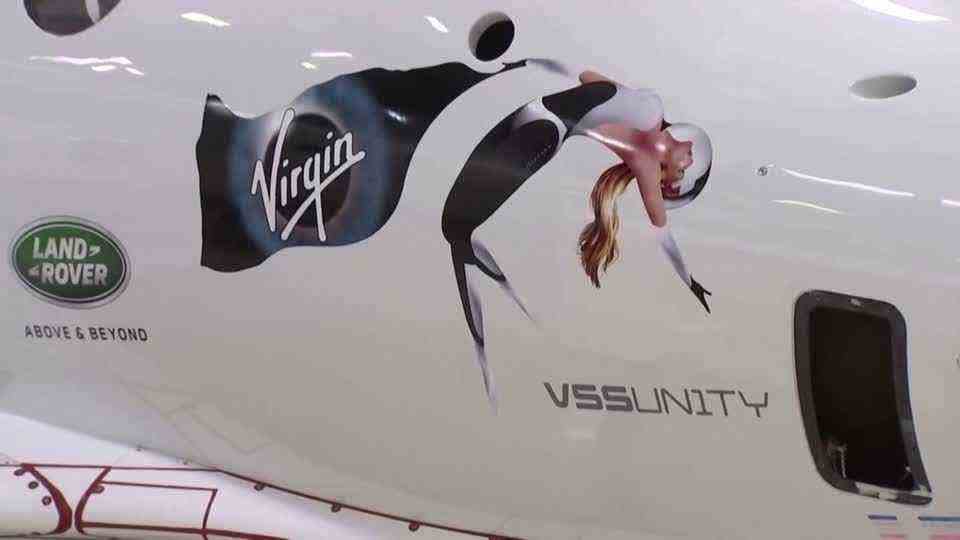Space tourism
Vacations in space: The business of traveling in space is picking up
In September 2021, a SpaceX Falcon 9 took off from ramp 39A of the Kennedy Space Center in Florida with four private individuals.
© John Raoux / AP /
Tens of millions in the account and no idea where to put them? For adventure seekers with a heavy budget, providers for excursions into space are targeting. Space nations are just as much involved as private companies – as if there was no climate change.
Anyone who has always wanted to go down in the history books as a vacationer would have the opportunity to do so in the next year or the year after next. You can book a flight to the International Space Station (ISS) including a walk in space. “This has never been done by a private individual before,” says Tom Shelley. As head of the US company Space Adventures, which specializes in space tourism, he sells the trip together with Russia.
The excursion is only for the very rich. “The price is very high, so there aren’t very many who can afford it,” admits Shelley in an interview with the German Press Agency in Moscow. According to his information, a flight to the ISS with the Russian space agency Roskosmos costs the equivalent of up to 50 million euros. The spacewalk tour planned for 2023 or 2024 is likely to become even more expensive.
Space tourism attracted a lot of attention in 2021 – also because of the race between two billionaires. In the summer, the British billionaire Richard Branson and shortly afterwards Amazon founder Jeff Bezos tested their missiles. In the months that followed, Bezos sent two more flights into space with a total of ten passengers – including the actor William Shatner, known as Captain Kirk from “Starship Enterprise”.
Bezos has announced further short trips into space for 2022, the demand for tickets is very high. Branson also wants to offer flights. With Elon Musk, another billionaire with his own space company sent tourists into space in 2021. Its four passengers – none of them trained astronauts – spent several days in space and circled the earth several times on board a “Crew Dragon”.
Nine private individuals have already visited the ISS
In 2022, the company Axiom Space wants to bring tourists to the ISS in the first such cooperation with the US space agency Nasa. Roscosmos just flew Japanese billionaire Yusaku Maezawa and his assistant Yozo Hirano to the ISS.
Space tourism has picked up significantly, but there can be no talk of a boom – not only are the prices far too high for that, but also the spaceships and the ISS are simply too small. Since 2001, just nine private individuals have made it to the ISS. After the US space agency Nasa suspended its manned flights to the ISS, only Russian Soyuz rockets flew from 2011 to 2020. For a year and a half, private spaceships have been on the move on behalf of NASA – this can boost tourism again.
Virgin Galactic – This is how comfortably tourists fly into space from 2022
12 images
Russia, on the other hand, has rebuilt its spaceships in such a way that they can only be controlled by a trained cosmonaut. This means that there is now room for two tourists in the Soyuz. In the autumn, Russia also tested an extra-short training program for tourists. Nevertheless, the travelers have to bring a lot of time: You have to estimate three to four months for training and flight, says Shelley. “Many have obligations in life, so it is difficult to find a free time.”
The problem with health
“We have worked over the years to lower the requirements for private individuals,” says the head of Space Adventures. “You don’t have to be perfect. It’s okay to have a few small health problems. As long as we know the risks, we can manage them.” So far there is hardly any empirical data on how, for example, the body of older people copes with weightlessness – such data could be interesting for flights to Mars, for example.

The Japanese Yozo Hirano, member of the main crew of the recent Soyuz mission to the International Space Station (ISS).
© Pavel Kassin / Roscosmos Space Agency / AP / DPA
From many quarters, there is sharp criticism of space tourism, for example from environmentalists, politicians and celebrities: It is a business of the rich and for the rich, which is largely carried out without scientific research interests serving the well-being of mankind and without consideration for the climate it. The rocket launches require vast amounts of fuel, the material and logistics requirements are immense, and the per capita climate balance for all tourists is correspondingly devastating.
Astronauts and cosmonauts from national space agencies came up against criticism because space tourists like to refer to themselves as astronauts, even if they only spent a few minutes marveling in space. Due to the increase in the number of space tourists at the end of the year, the US aviation authority FAA ended a program in which everyone who was in space received a coveted wing brooch.

“The Astronaut Wings Program, launched in 2004, served its original purpose of bringing more attention to this challenge,” said FAA chief Wayne Monteith. Instead, people who have flown into space would now only be listed on the Internet.
Also read:
– 60 years of space travel history: How NASA conquered more than just the moon
– The answer to Kim Jong Un: A visit to the South Korean space center
– The photographic legacy of NASA: The sensational images of the moon missions

